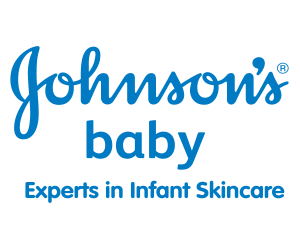Cradle Cap
Of all the things you envisioned while preparing for your baby, you probably didn't imagine dandruff-like flakes covering her scalp. But your newborn may indeed have scaly patches on her scalp and eyebrows. It's called cradle cap or seborrheic dermatitis, and is very common in young infants. It usually begins in the first weeks of life and slowly disappears over the next several weeks or months. Most cases of cradle cap clear up by the time your baby is between eight to 12 months old.
 Although it may be tempting to do so, do not attempt to pick off the patches with your fingernails! One way to gently remove the symptoms of cradle cap is to soften it first by massaging a baby oil, such as JOHNSON'S® Baby Oil into her hair and scalp. Leave the oil on for a few minutes to help to loosen the crusty patches. Then use a fine-toothed comb and clean your baby's scalp with a mild, gentle cleanser that will not sting her eyes.
Although it may be tempting to do so, do not attempt to pick off the patches with your fingernails! One way to gently remove the symptoms of cradle cap is to soften it first by massaging a baby oil, such as JOHNSON'S® Baby Oil into her hair and scalp. Leave the oil on for a few minutes to help to loosen the crusty patches. Then use a fine-toothed comb and clean your baby's scalp with a mild, gentle cleanser that will not sting her eyes.
You can use a mild cleanser like JOHNSON'S® Baby Shampoo. Add a little to a washcloth and use a gentle, circular motion to remove the flakes and oil from your baby's head. Although cradle cap can be unsightly at times, it is harmless. However, if you have any questions, or if cradle cap thickens, becomes red and irritated, or spreads to other areas of your baby's body (beyond her scalp or eyebrows), call your Midwife or Doctor.
Remember to be extra gentle when massaging or washing around the fontanels, or soft spots, on your baby's head.
Nappy Rash
Many babies experience nappy rash at some point.
Nappy rash is one of the most common skin conditions – it’s also the most common skin problem in early childhood.
You won’t be alone if your baby develops nappy rash, most children aged 0-3 years old develop nappy rash in some way and thus require treatment. Although it’s usually seen in babies from 6-8 months, it can also happen much earlier.
Eczema & Dry Skin
Eczema & dry skin are fairly common in babies. Up to 1 in 5 babies are affected by eczema, so it’s a fairly common condition you might need to deal with. The key is to ensure you keep the skin moisturised as much as possible and follow professional advice to properly manage the condition. Eczema is a chronic inflammatory condition that affects up to 20 percent of all babies, particularly those with a family history of skin irritations, asthma, or allergies. It is usually experienced as periods of flare-ups followed by periods of no or few symptoms. In babies, it often appears as a red, irritated, itchy rash on the face and scalp. In some cases, certain foods (such as cow's milk, eggs, wheat or oranges) may provoke an attack.
In babies, eczema often appears as a rash on hands, face, neck, elbows and back of the knees, but may spread to other areas. You should definitely talk to your baby’s doctor or health care provider about treatment if the condition is severe, but here are some tips for dealing with eczema, as well as extremely dry or sensitive skin:
- Avoid the things you think may cause itching, such as dust, grass, weeds, wool clothing and certain soaps, detergents, fabric softeners and perfumes. It may help to keep a diary to determine the cause.
- Give your baby short baths - no more than 5-10 minutes - in water that is warm, not hot. You may want to add a specially formulated oil to the bathwater.
- Use mild skin cleansers or shampoos specially made for babies with sensitive skin. Be extra careful on areas often exposed to the environment.
- Dry the skin after a bath by patting with a soft towel, and then immediately apply moisturiser. Do not rub the skin.
- Moisturise frequently throughout the day, especially after bathing.
- Use an emollient cream, smoothing it into the skin in a downward motion.
Although eczema can be an irritating condition, especially during periods of flare-ups, by following these tips, you can help to make your baby more comfortable.
Peeling
You may also notice during the first few days that your newborn's skin peels slightly – especially on the palms of her hands, soles of her feet, and her ankles. This is perfectly normal, especially if your baby was born past her due date. After a few days the peeling will go away. Just remember to apply a moisturiser made for babies to help maintain her soft skin.
Other Ways to Protect Baby Skin
You can also keep your baby's skin protected by dressing her in loose-fitting clothing, to prevent chafing. Protect your baby's skin from all direct sun exposure with a hat and other forms of shade. As your baby grows, her skin will adapt and grow with her. With your care and attention, you play an important role in keeping your infant, and your infant's skin, healthy. And whether you're bathing your baby's skin or smoothing on a moisturiser, you're doing more than helping to keep her skin healthy. With your gentle hand, you're also forming a special bond with your infant through the power of your touch.




